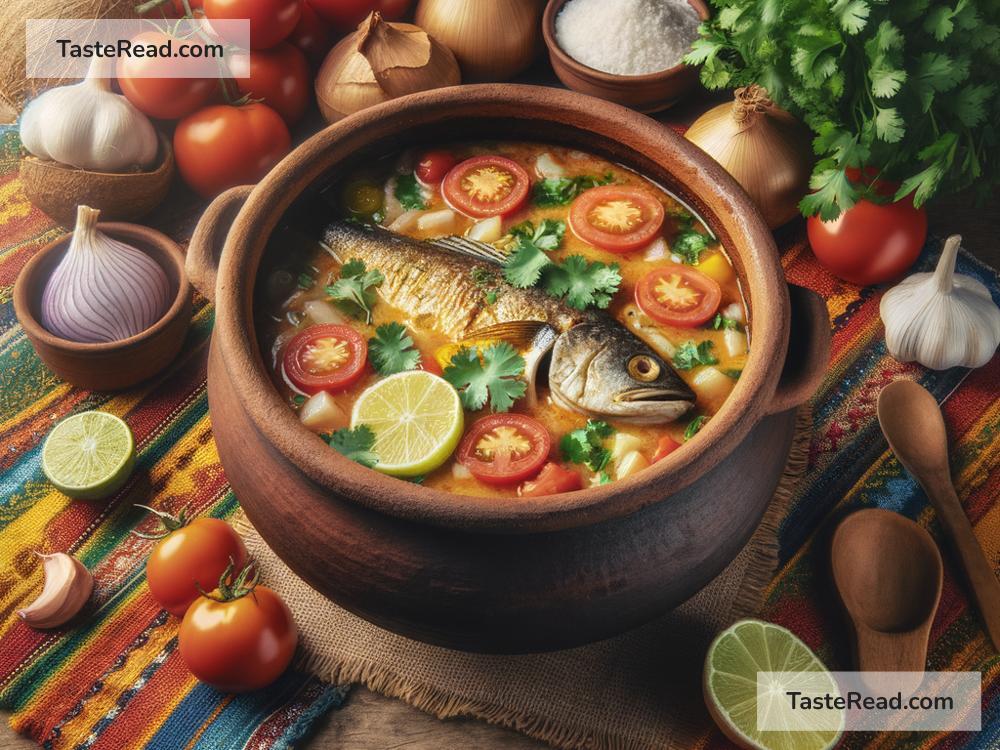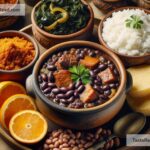The History of the Brazilian Moqueca
Brazil’s culinary heritage is famous for its vibrant flavors and unique dishes, and one recipe that stands out is Moqueca. Pronounced “moo-KEH-kah,” this beloved Brazilian stew has been bringing people together over bowls of delicious seafood, vegetables, and fragrant spices for centuries. Its story is as rich as its taste, rooted in a blend of Indigenous, African, and Portuguese influences that define the country’s culture.
What Is Moqueca?
Moqueca is a hearty and flavorful seafood stew, typically made with fish, shrimp, or both. It’s simmered with tomatoes, onions, garlic, and fresh herbs in a sauce that’s rich with coconut milk or palm oil, depending on the region. Served with a bowl of steaming white rice and often paired with farofa (toasted cassava flour) and pirão (a thickened fish sauce), Moqueca isn’t just a meal – it’s an experience.
But Moqueca isn’t just one recipe. In Brazil, there are two major styles of Moqueca: Moqueca Capixaba, from the state of Espírito Santo, and Moqueca Baiana, from Bahia. These two versions have distinct differences that reflect their regional histories and cultures. Let’s dive into the journey of this dish to see how it became a symbol of Brazilian cuisine.
Indigenous Roots: The Beginning of Moqueca
Before colonization, Brazil’s Indigenous peoples were already cooking meals that resembled a basic version of today’s Moqueca. They often steamed or roasted fish over a fire, combining it with local herbs, fruits, and seeds. The name “moqueca” comes from the Tupi language, where the word moquém refers to “a method of cooking over fire.”
These Indigenous cooking techniques formed the foundation of Moqueca, emphasizing fresh, local ingredients and simple preparation. When Brazilian culture began to evolve with colonial influences, these traditions remained an essential part of the recipe.
The Arrival of the Portuguese: European Influence
When the Portuguese arrived in the early 1500s, they brought with them new cooking methods, ingredients, and ideas. They introduced onions, garlic, and olive oil, staples that blended seamlessly into Moqueca’s evolving recipe. The Portuguese influence enhanced the stew’s flavors and transformed Moqueca from a simple fish dish into something more complex and refined.
Additionally, Portuguese colonizers introduced rice to Brazil, which became the perfect accompaniment to Moqueca and other Brazilian dishes. Rice helped make Moqueca a complete and satisfying meal, further solidifying its place in Brazilian food culture.
African Contributions: The Soul of Moqueca
One of the most significant influences on Moqueca came from African traditions, brought to Brazil during the transatlantic slave trade. African slaves introduced cooking techniques and ingredients like dendê oil, also known as palm oil, which added a vibrant color and rich flavor to Moqueca. They also brought coconut milk, which creates the creamy texture found in the Bahia region’s version of the dish.
Bahian Moqueca, in particular, showcases the African contribution to Brazilian cuisine. It’s prepared with plenty of dendê oil and coconut milk, giving it a bold and velvety taste. The African influence added depth to Moqueca, turning it into a dish that reflects resilience, creativity, and culture.
Two Regional Stories: Capixaba vs. Baiana
As Moqueca evolved, two distinct styles emerged, shaped by the ingredients and cultures of their regions.
-
Moqueca Capixaba (Espírito Santo): The Capixaba version of Moqueca is lighter and uses native annatto seeds (called urucum) instead of dendê oil or coconut milk. Annatto gives the dish a bright red-orange color without altering the taste significantly. Moqueca Capixaba also avoids strong flavors like coconut milk, focusing instead on the natural taste of the seafood and vegetables. This version is an ode to simplicity.
-
Moqueca Baiana (Bahia): In Bahia, Moqueca is more indulgent, featuring dendê oil and coconut milk for bold flavor and creamy texture. Bahian Moqueca has layers of flavors, often spiced with malagueta peppers for extra heat. This version reflects Bahia’s African heritage and is more intense than the Capixaba style, making it a favorite for those who enjoy richer flavors.
Whether you choose Moqueca Capixaba or Moqueca Baiana, both versions highlight the diversity of Brazilian cuisine and the creativity of its people.
Moqueca Today: A Dish That Brings People Together
Today, Moqueca isn’t just a meal; it’s a celebration. Brazilians eat Moqueca during family gatherings, parties, and special occasions. The dish is popular in coastal towns, where fresh seafood is plentiful, but it’s enjoyed across the entire country. Many chefs have created their own variations of Moqueca, adding modern twists while respecting its roots.
Moqueca’s history demonstrates the beauty of cultural exchange. It combines Indigenous traditions, African resilience, and European techniques into one harmonious dish. Every spoonful carries a story of Brazil’s people, their hardships, and their creativity.
Conclusion
Moqueca is more than a seafood stew – it’s a symbol of Brazil’s rich history and diverse culture. From its Indigenous beginnings to its African soul and Portuguese influence, Moqueca represents the melting pot of traditions that define Brazilian cuisine. Whether you prefer the simplicity of Moqueca Capixaba or the bold flavors of Moqueca Baiana, one thing is certain: Moqueca is a dish that continues to unite people around the world with its warmth and flavor. So, next time you’re looking for comfort food, why not try your hand at making Moqueca? You’ll be tasting centuries of history in every bite!


